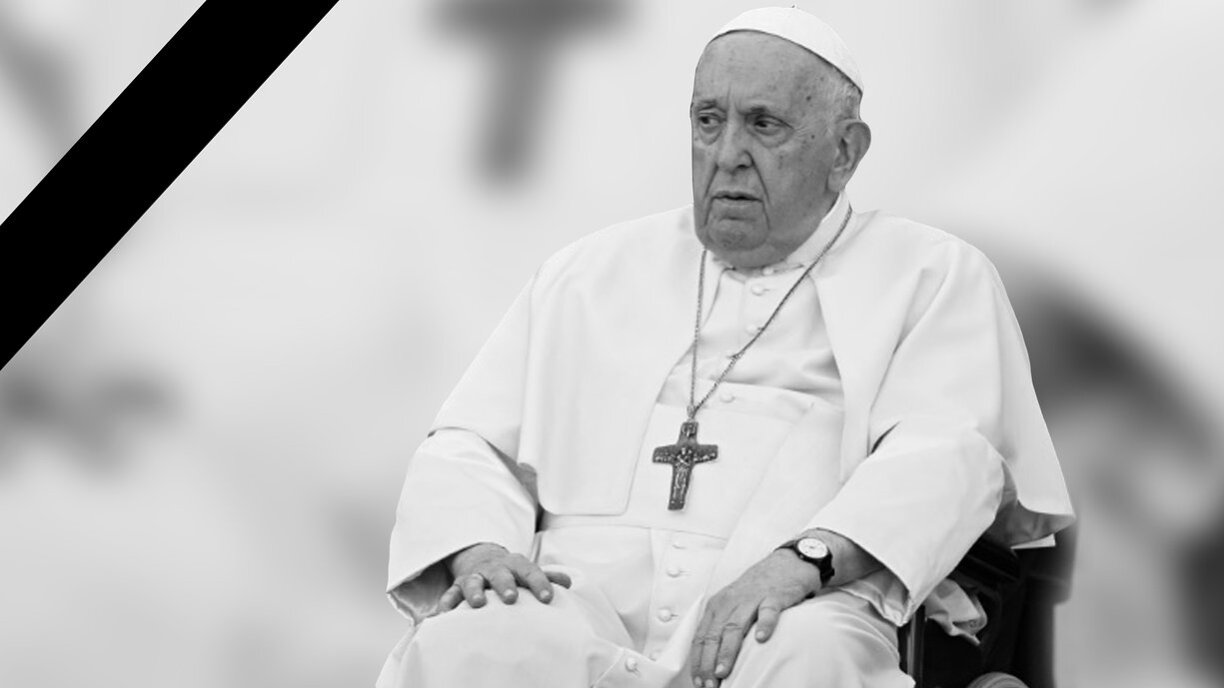
The 88-year-old Catholic leader died on Monday morning, almost a month after being discharged from five weeks in hospital with double pneumonia.
“This morning at 7.35am (0535 GMT) the Bishop of Rome, Francis, returned to the home of the Father,” said Cardinal Kevin Farrell in the statement published by the Vatican on its Telegram channel.
“Dearest brothers and sisters, it is with deep sorrow that I must announce the death of our Holy Father Francis,” said Cardinal Kevin Farrell in the statement published by the Vatican on its Telegram channel.
“This morning at 7.35 am (0535 GMT) the Bishop of Rome, Francis, returned to the home of the Father.
“His entire life was dedicated to the service of the Lord and His church.”
Francis’s death came just a day after he delighted the crowds of worshippers at the Vatican on Easter Sunday with an appearance on the balcony at Saint Peter’s Basilica despite still convalescing after a severe illness.
Francis had come close to dying twice earlier this year while suffering from pneumonia.
He spent 38 days in hospital, battling double pneumonia, before he was released on 23 March.
On Sunday he wished the crowds on Saint Peter’s Square a “Happy Easter” as he waved and in his traditional “Urbi et Orbi” (“To the City and the World”) benediction he called for freedom of thought and tolerance.
Francis, known for his progressive stance on social issues and deep commitment to the poor, was the first pope from the Americas. His passing marks the end of a transformative period for the Church, with the almost 1.4 billion Catholics worldwide mourning his loss.
In September 2024, the pope visited Luxembourg and highlighted the Grand-Duchy’s role in international diplomacy. “Luxembourg can show everyone the advantages of peace as opposed to the horrors of war”, the Pontiff said.
Displaying his approachable and spontaneous character, the Pope made an unexpected stop for an emergency espresso at a café in the capital, offering a generous tip despite his meticulously planned route.
His passing marks the end of an era, and the leader of the Catholic Church will undoubtedly be missed by many around the world.
When a Pope dies, a series of long-established Vatican rituals come into effect, shaping the transition to his successor.
The Pope’s death is officially verified by the Camerlengo, a senior cardinal. In the past, he would tap the Pope’s forehead three times with a special hammer while calling his name. If there was no response, the Pope was declared dead. While this practice has been abandoned, the Fisherman’s Ring – symbolising papal authority – is still removed and destroyed. The Pope’s office and private quarters are then sealed until a successor is chosen.
Read also: What happens after the pope dies?
Only after these formalities is the news made public. An official document is issued, and the bells of the Vatican ring out in mourning. The Church enters a nine-day period of mourning, known as Novemdiales, during which several Masses are held. The Pope’s funeral takes place in St Peter’s Basilica.
The period between a Pope’s death and the election of his successor is known as the Interregnum. During this time, the Camerlengo oversees the Vatican’s administrative affairs but is barred from making major decisions.
The conclave – held in the Sistine Chapel – determines the next Pope. Only cardinals under 80 years old may participate, and they remain locked inside until a decision is reached. A two-thirds majority is required, but after 30 rounds of voting, a simple majority suffices. For the first time, Luxembourg’s Cardinal Jean-Claude Hollerich will take part in the papal election.
The world watches the Sistine Chapel’s chimney for a sign – white smoke means a new Pope has been chosen, while black smoke signals further deliberations. Once elected, the new Pope steps onto the balcony of St Peter’s Basilica to deliver his first address as Pontifex Maximus.